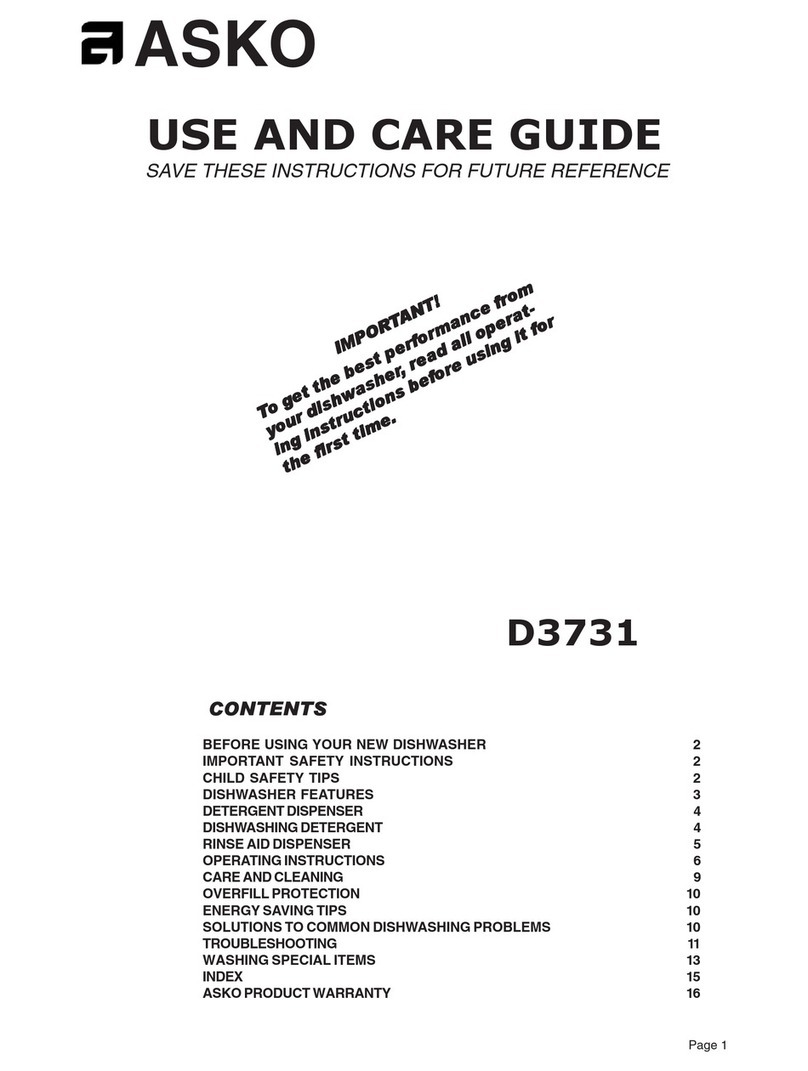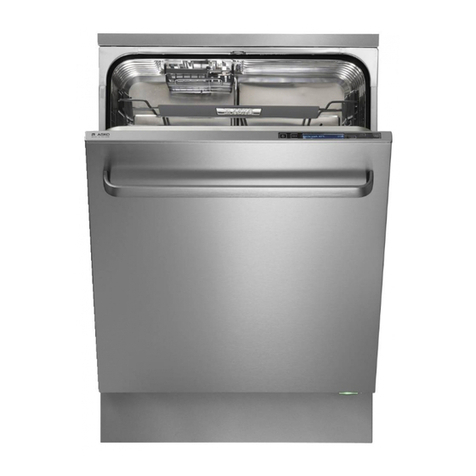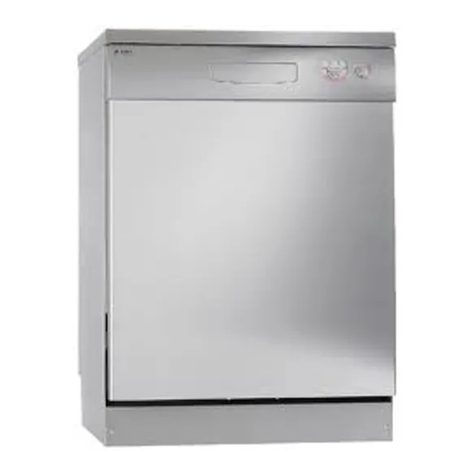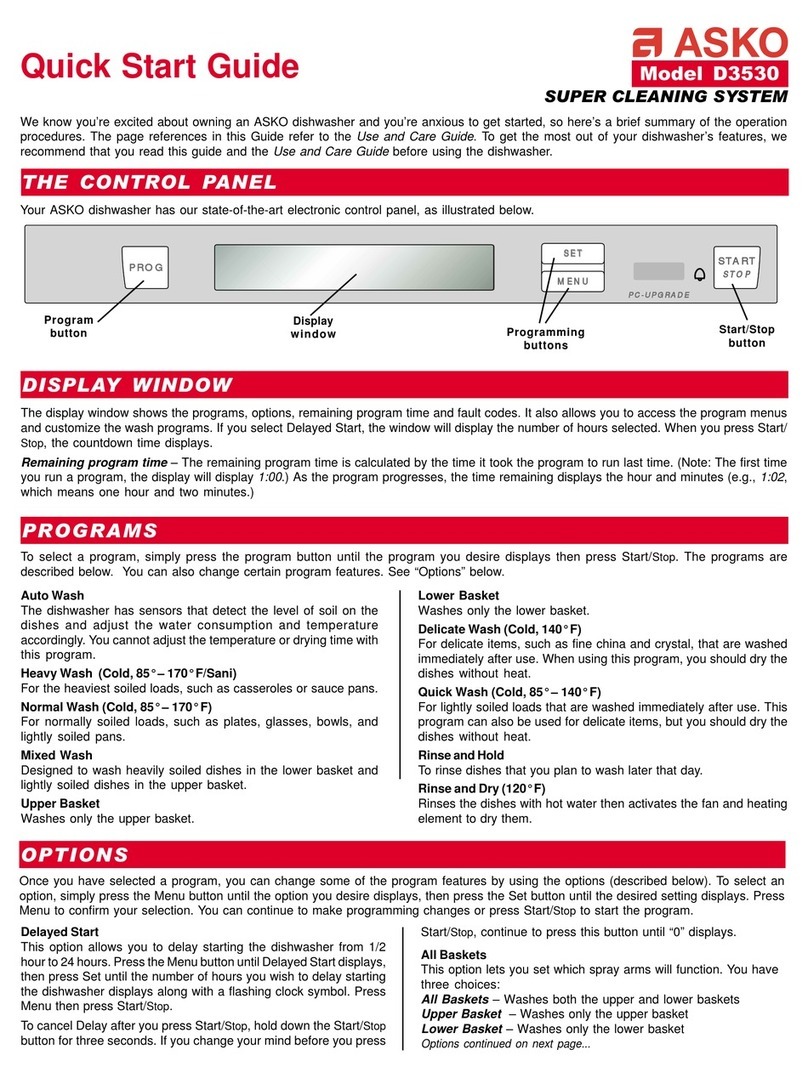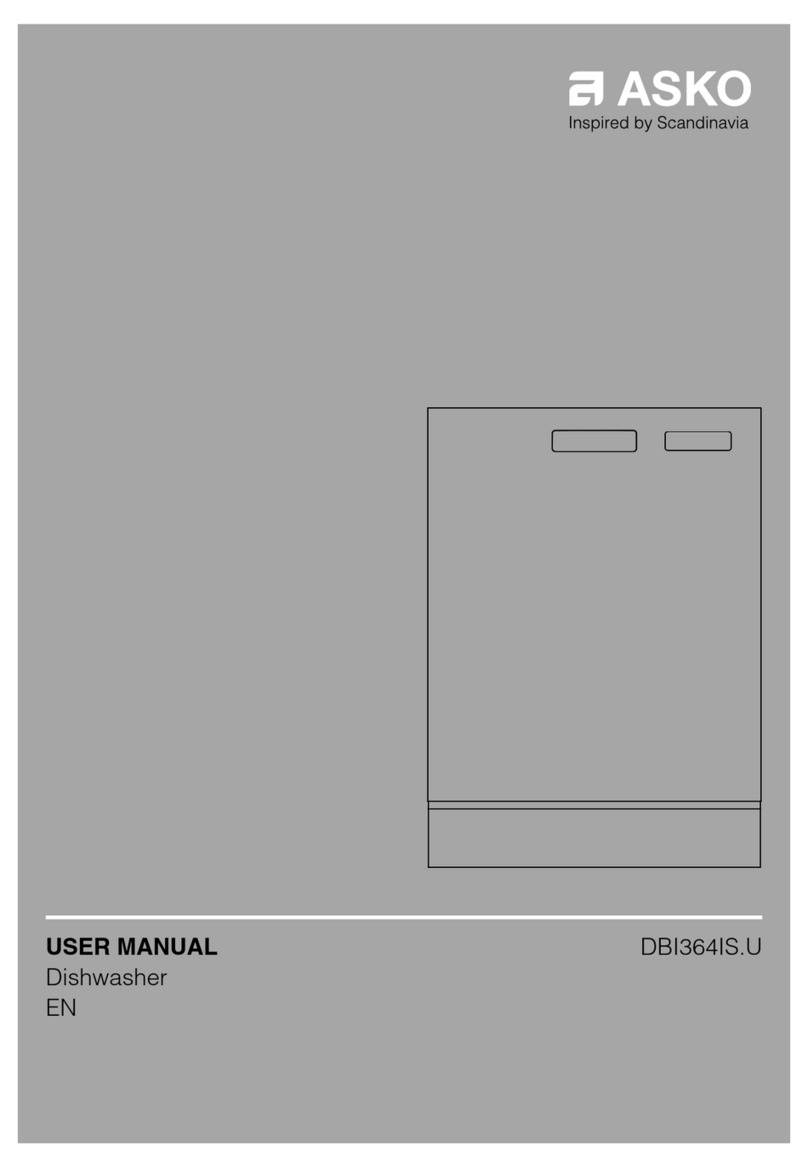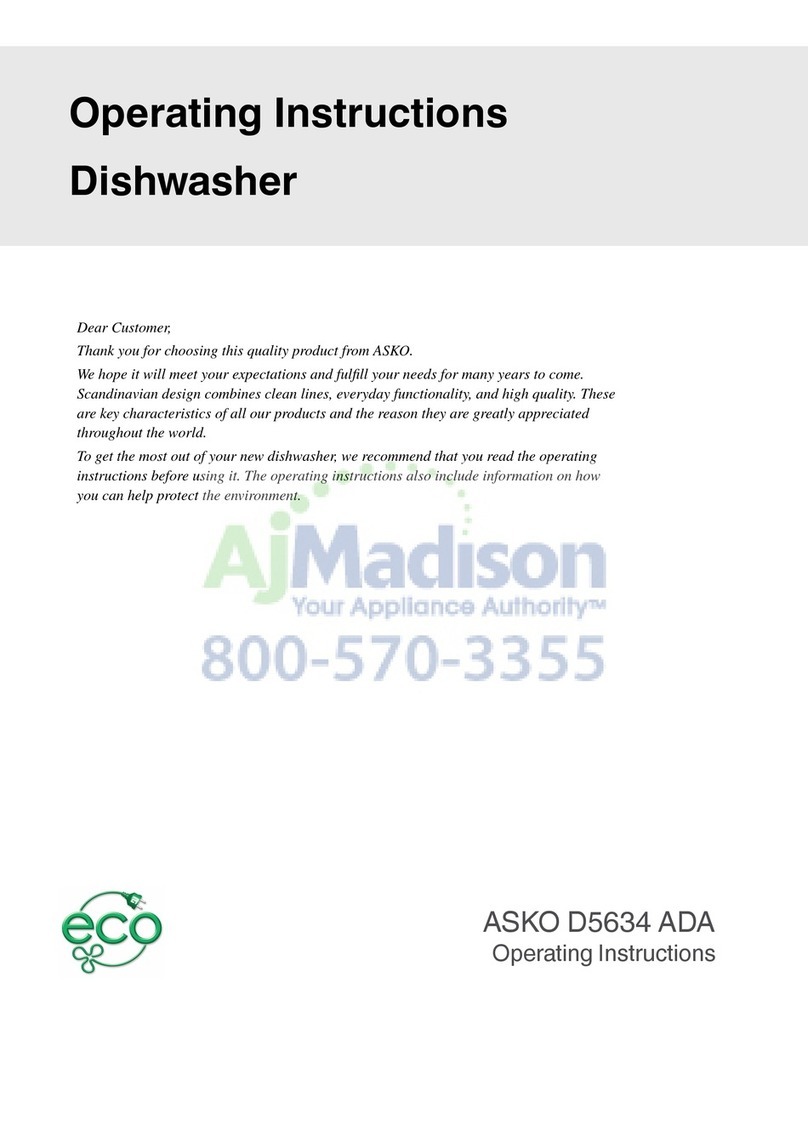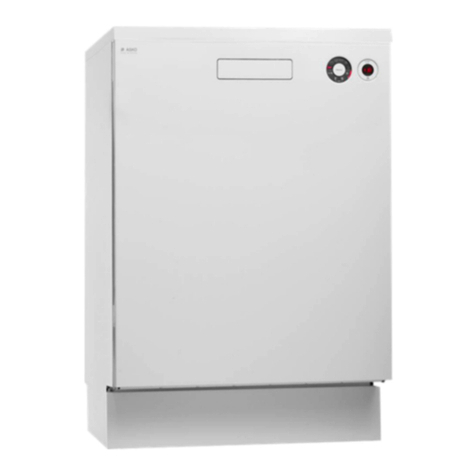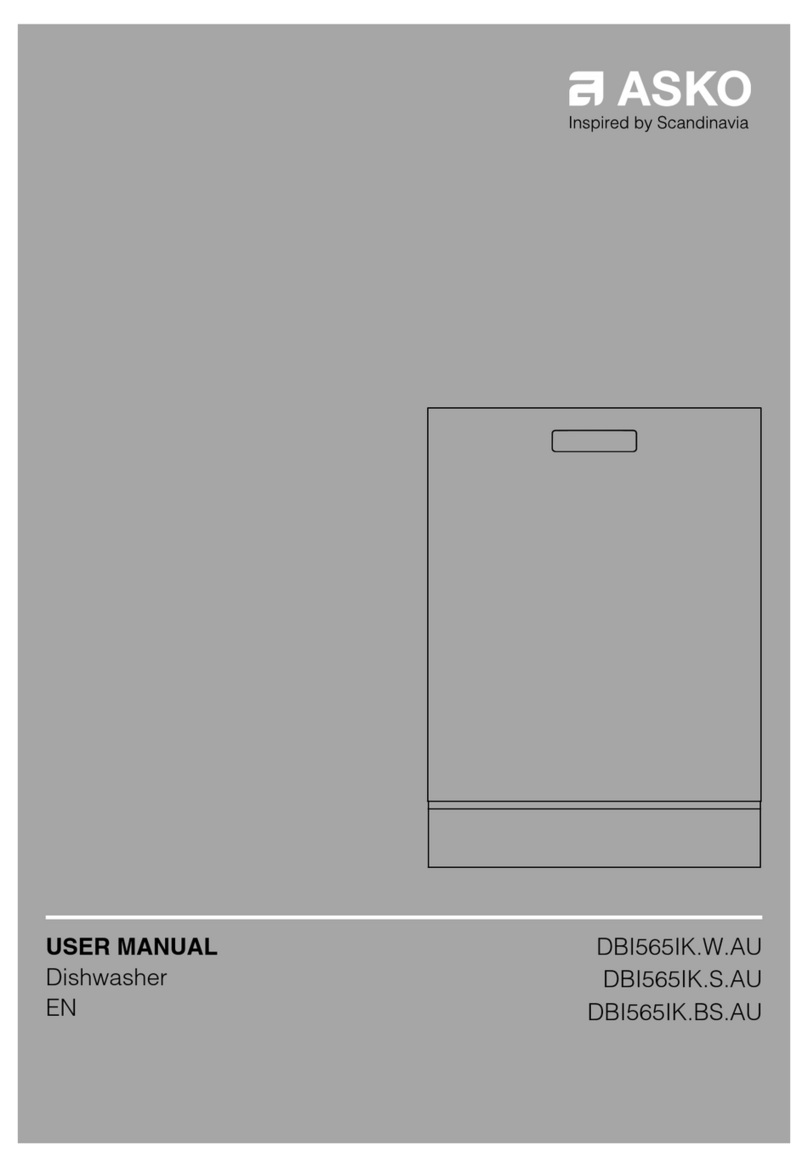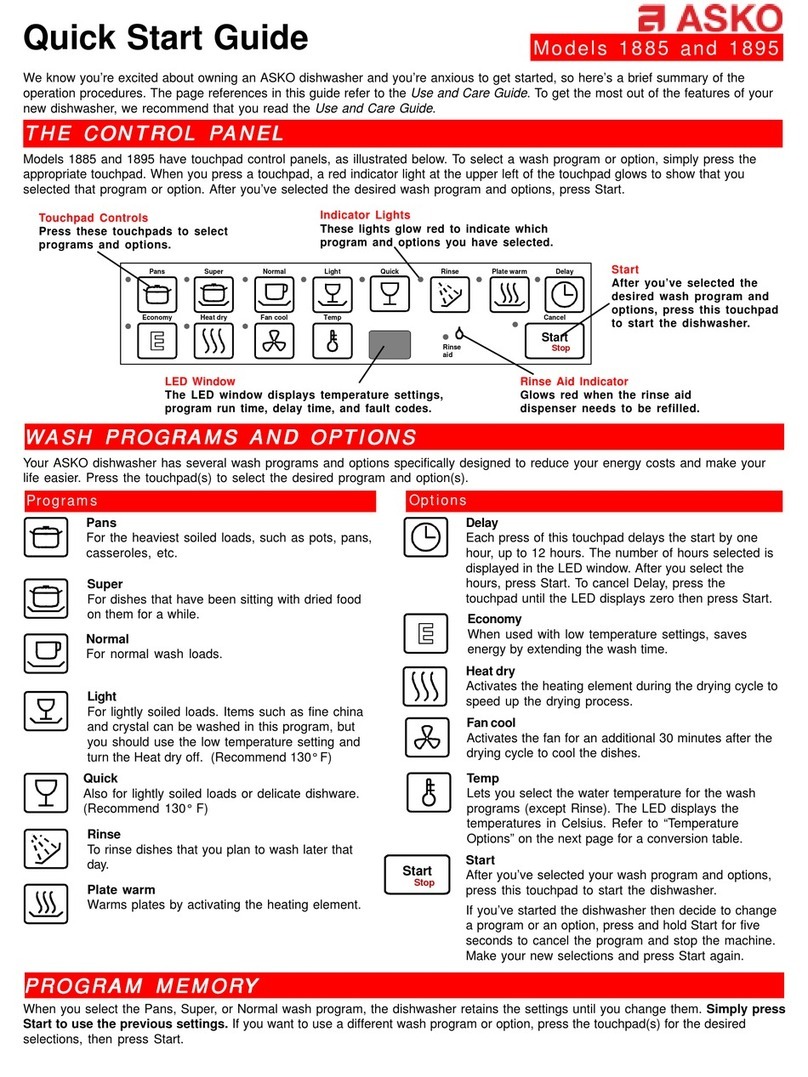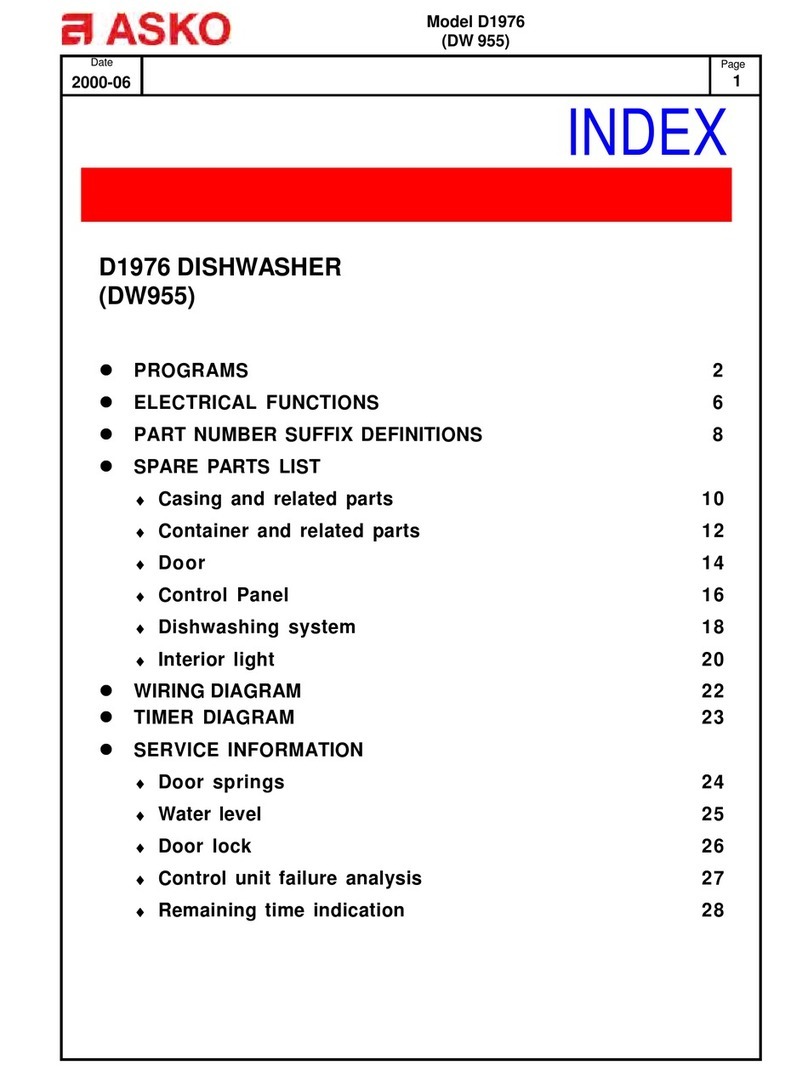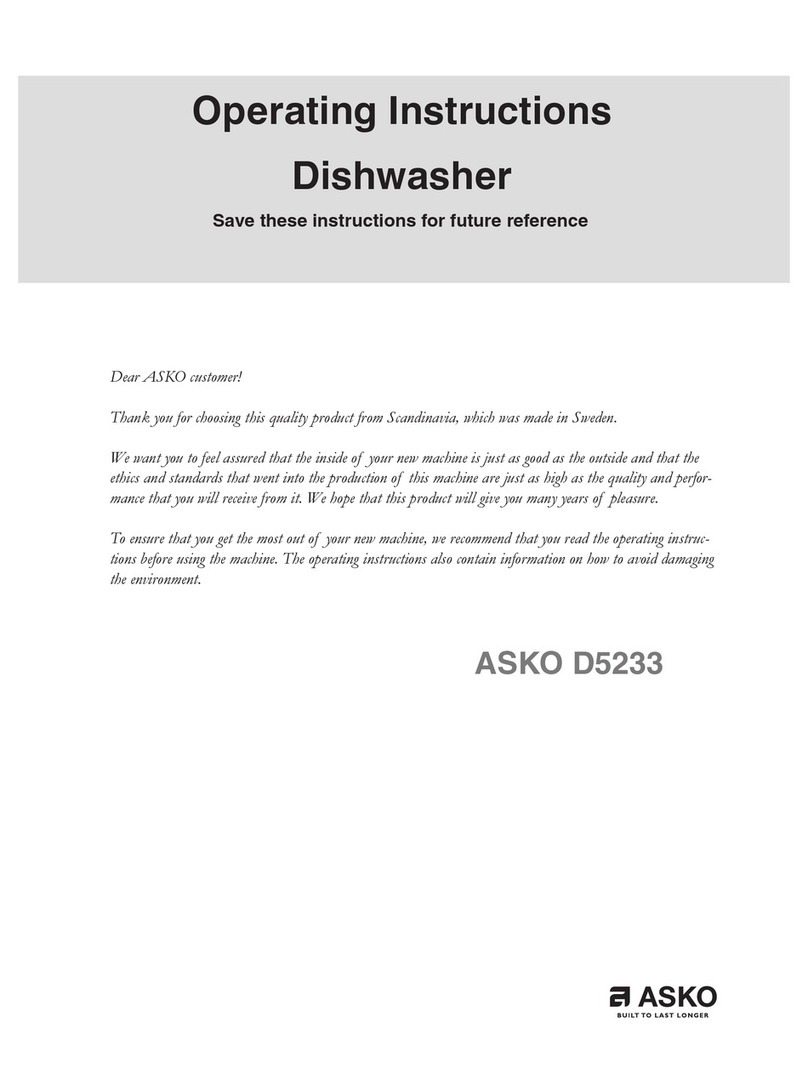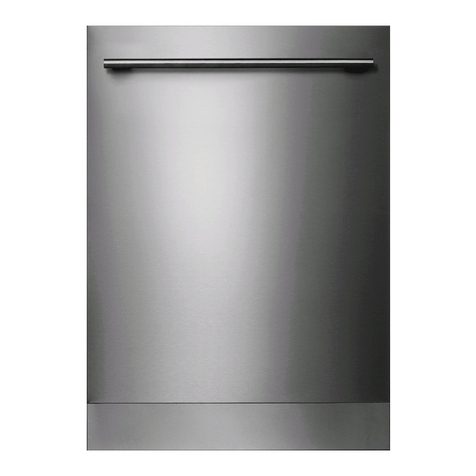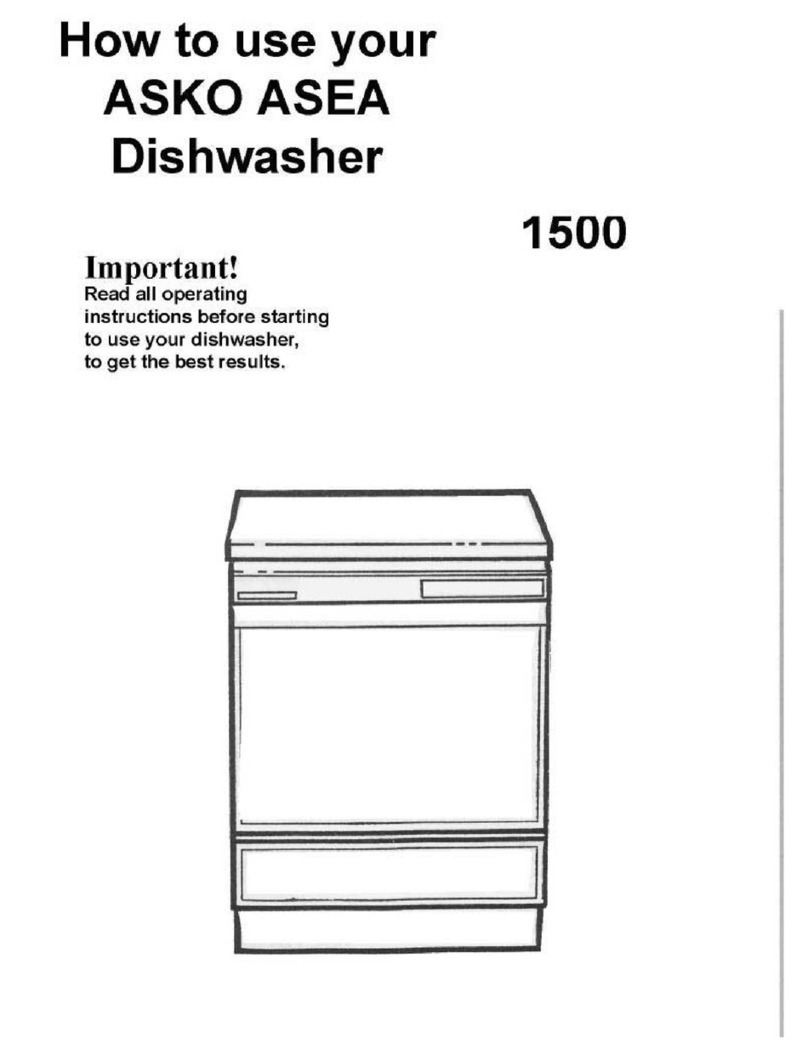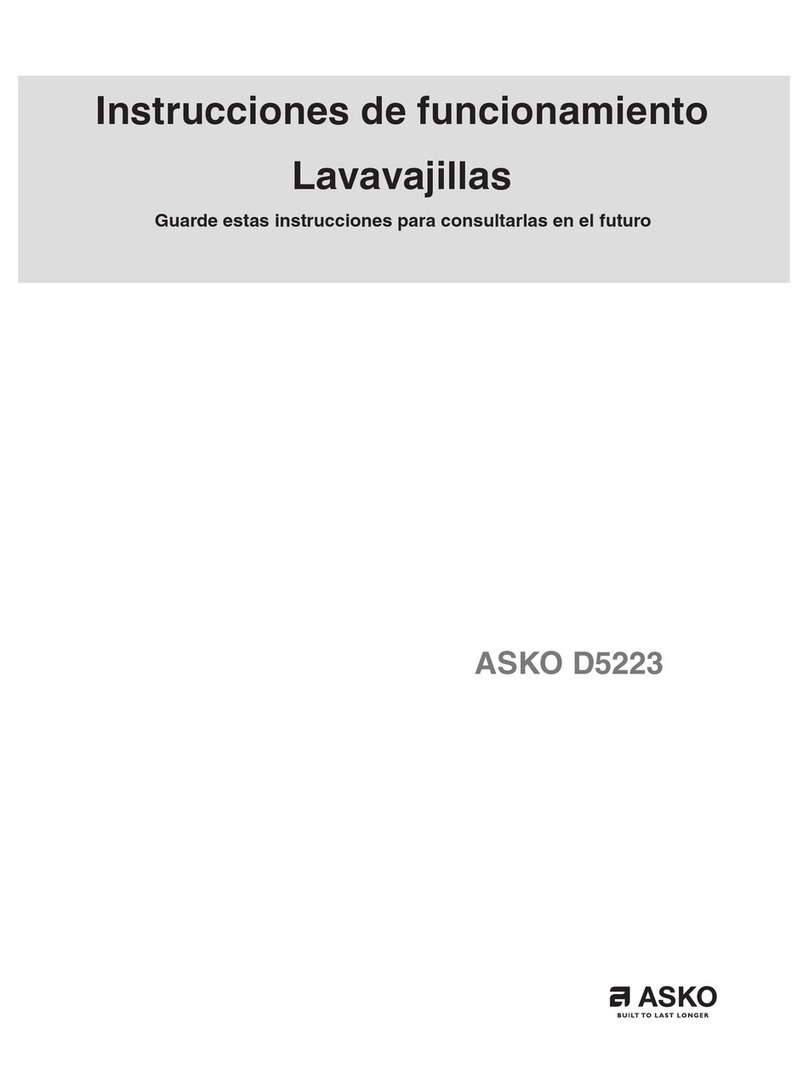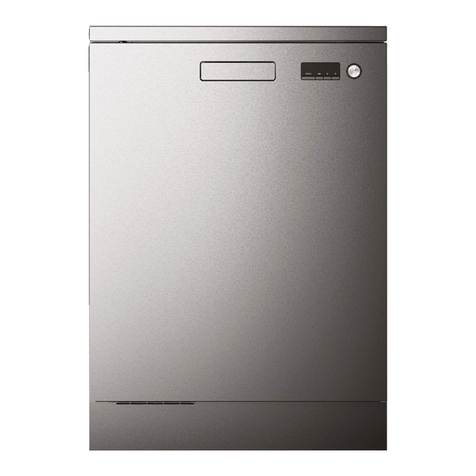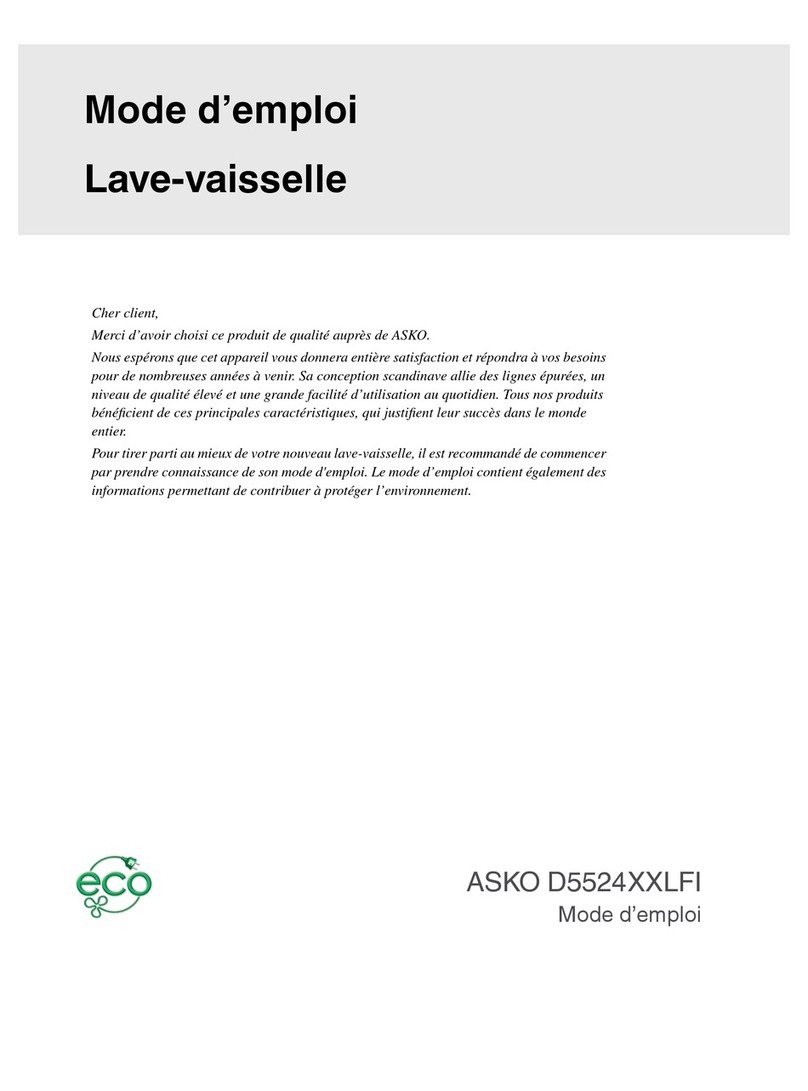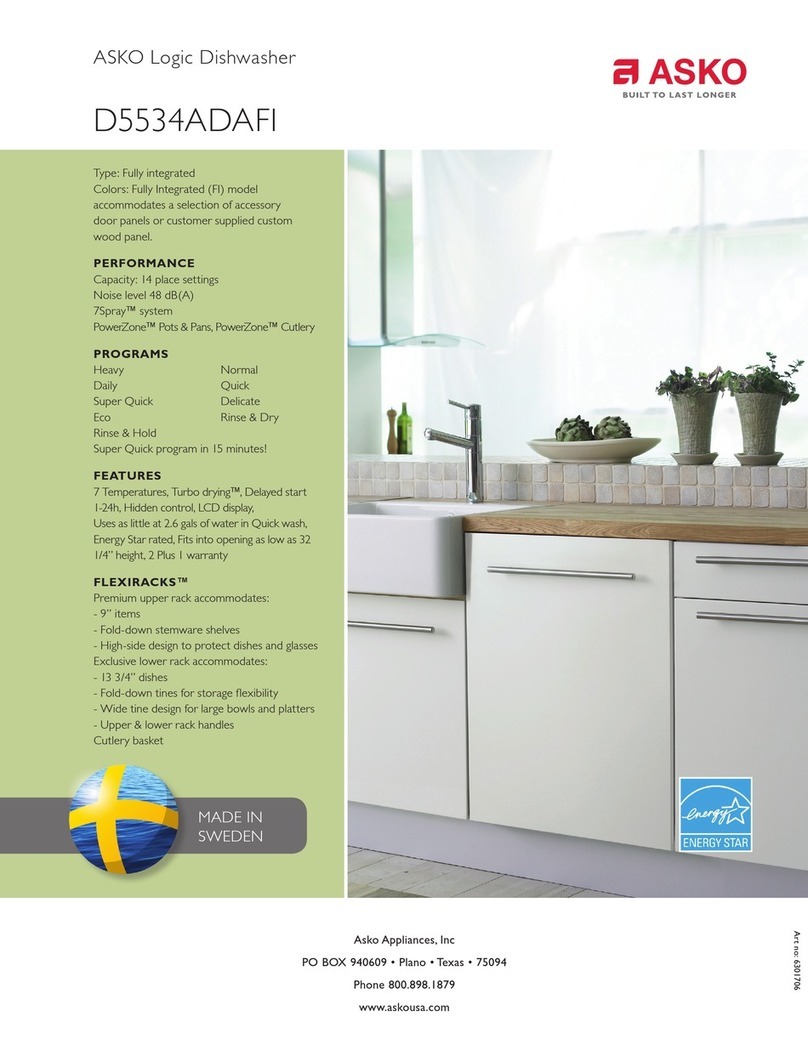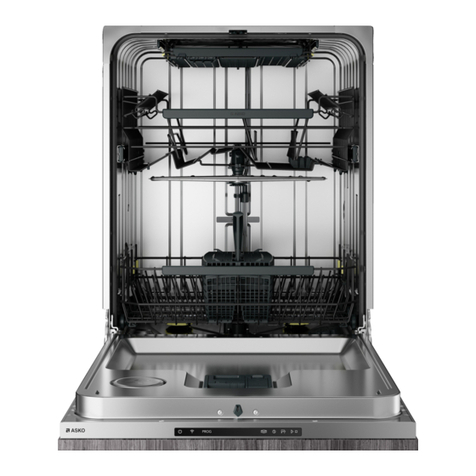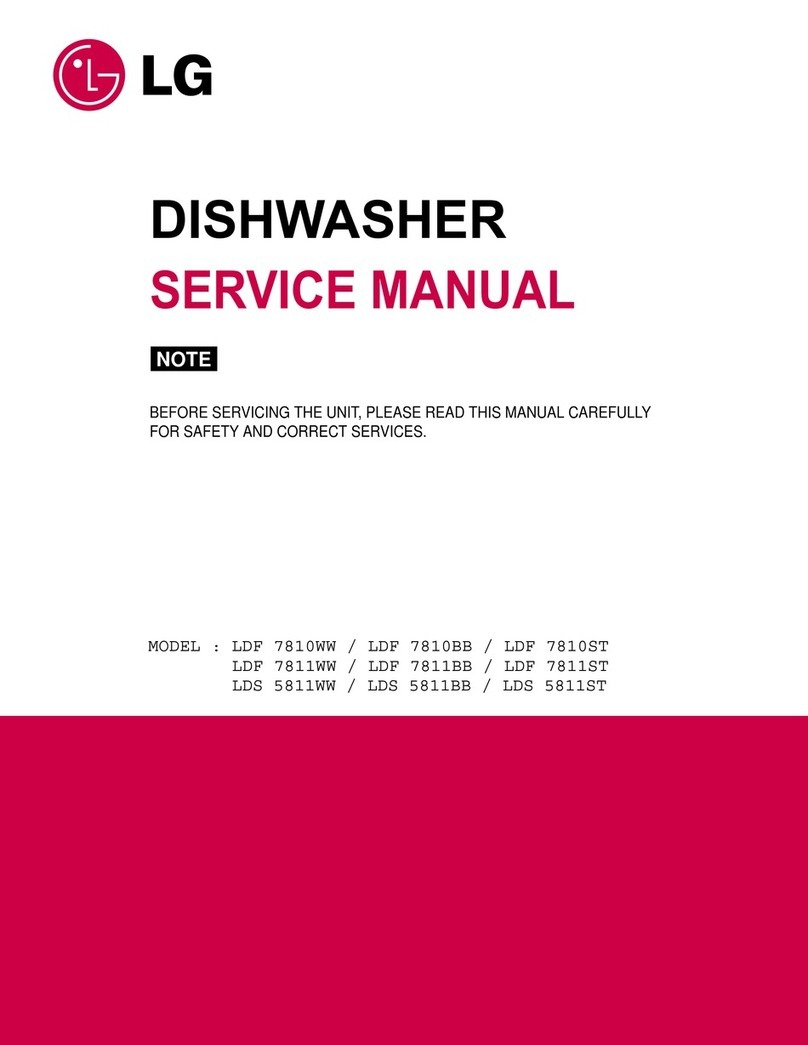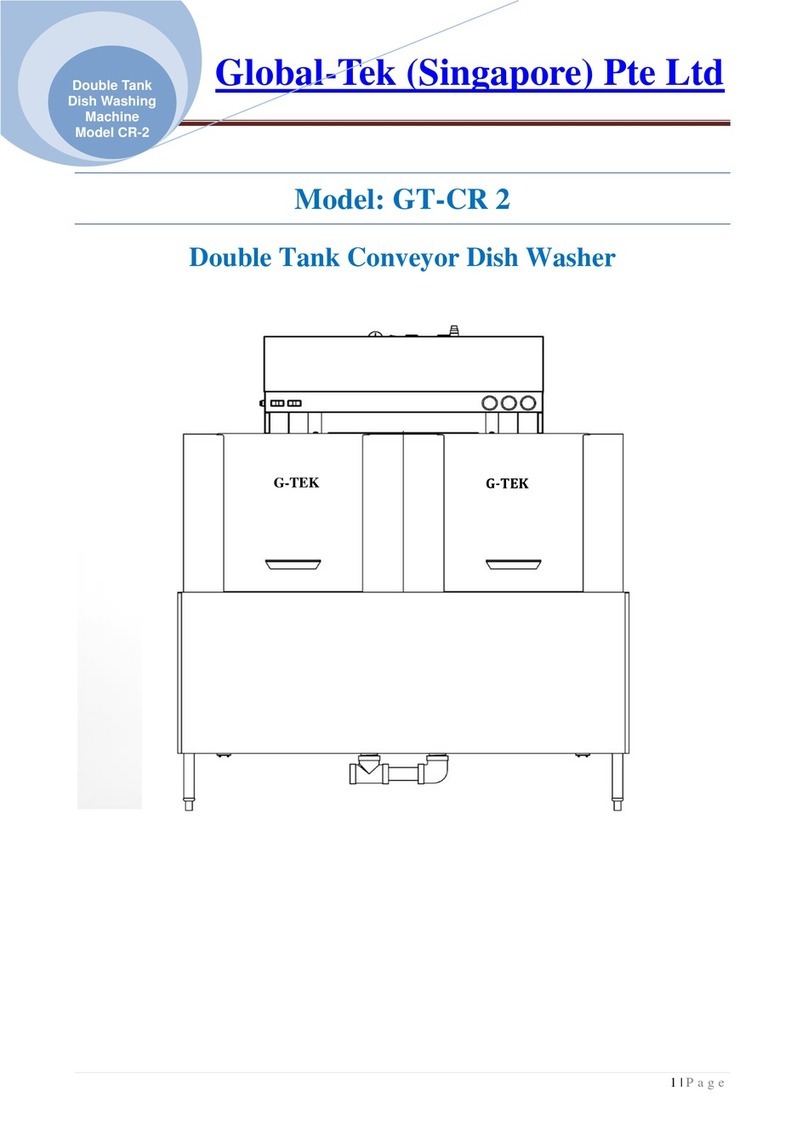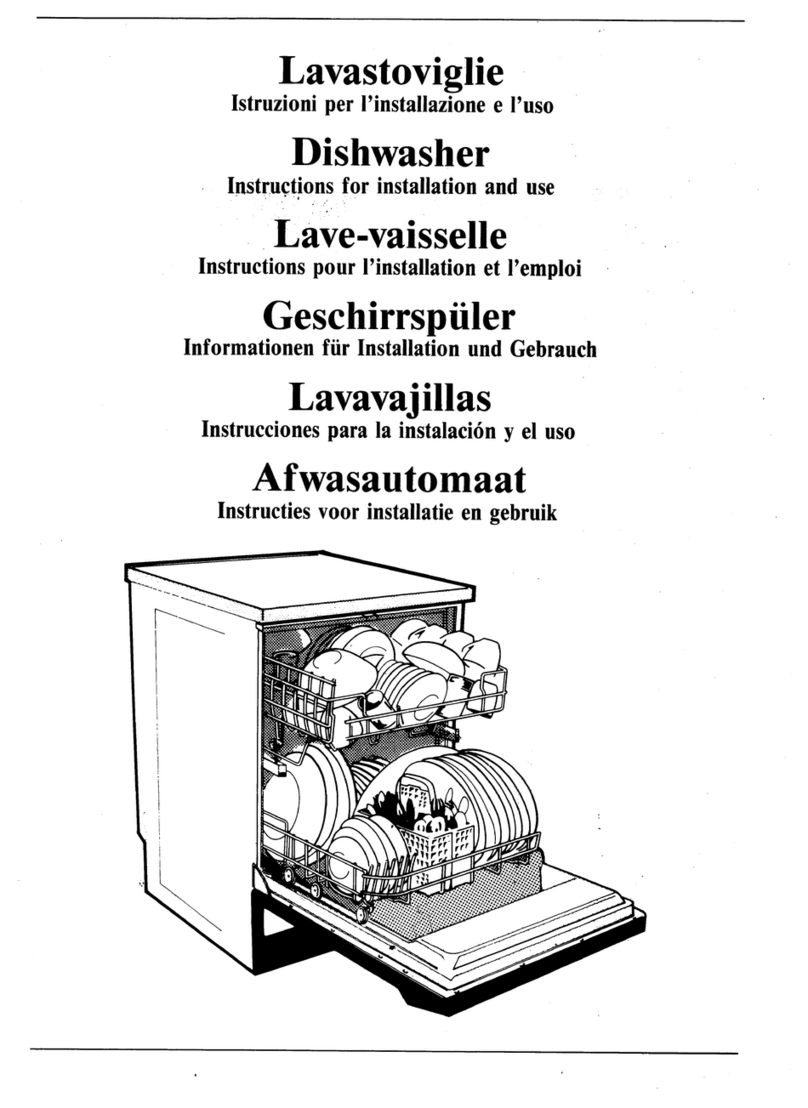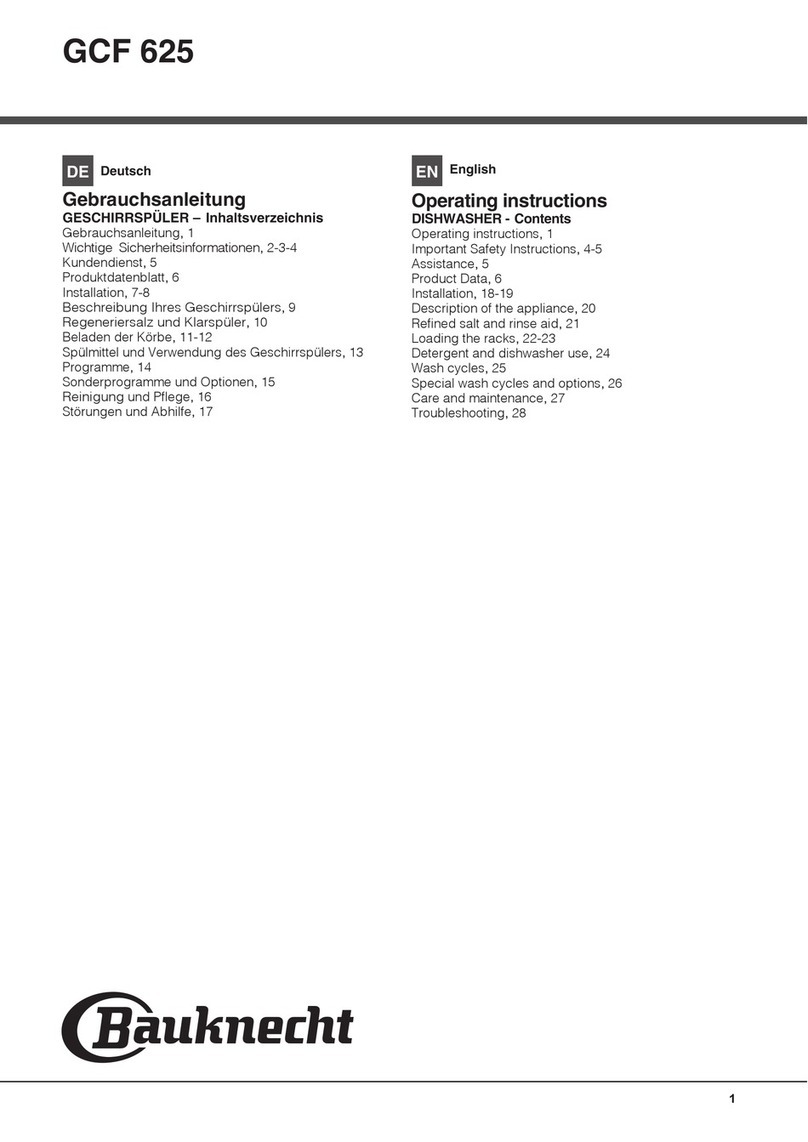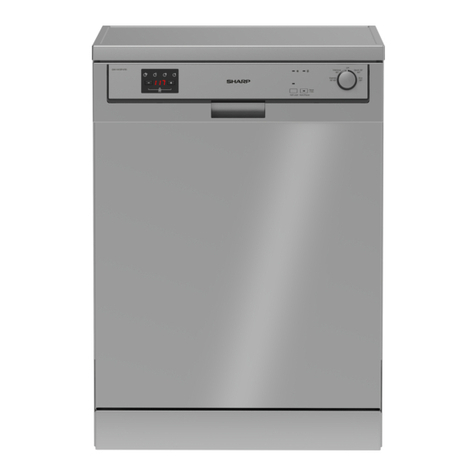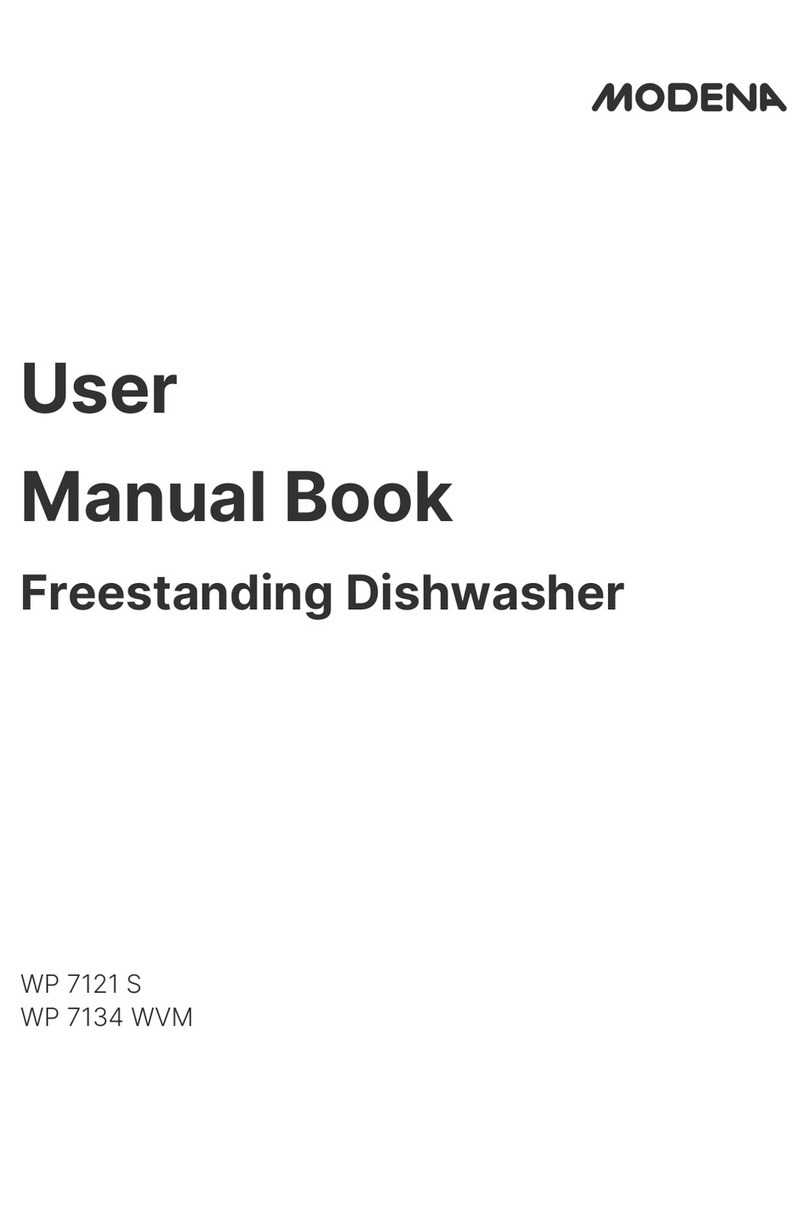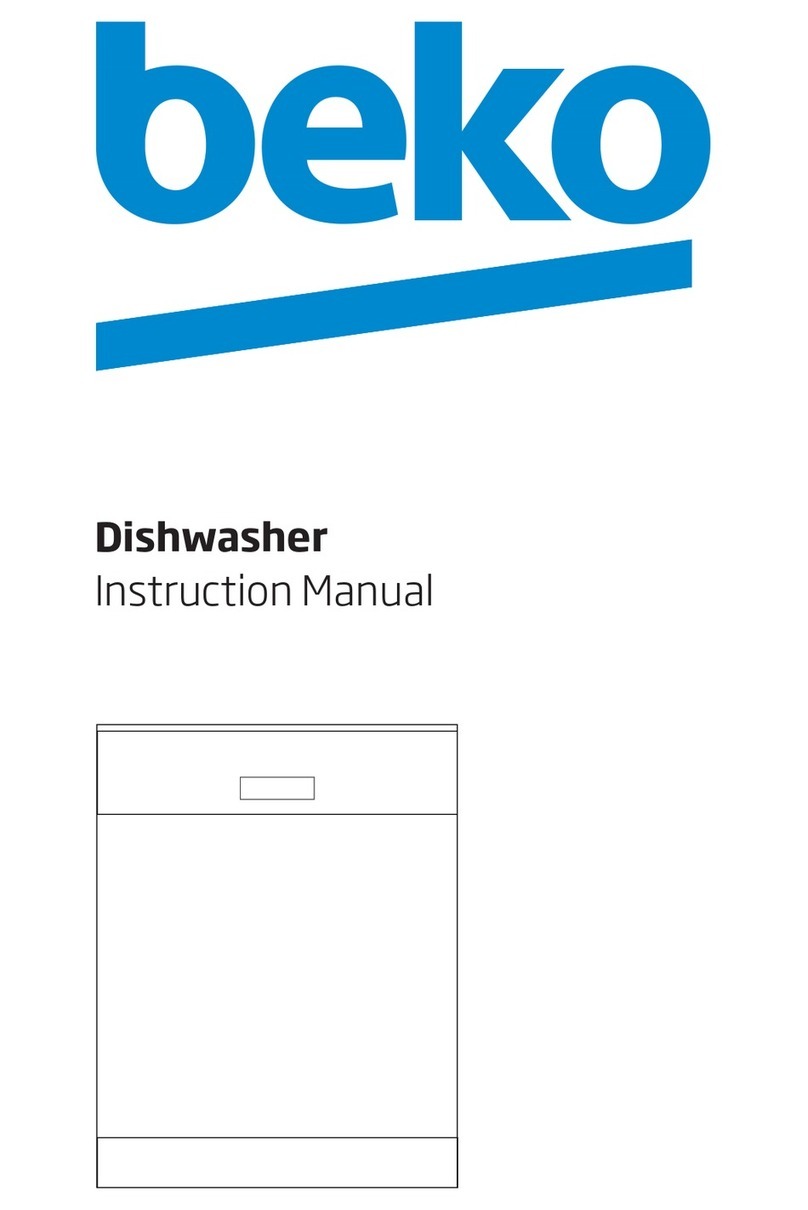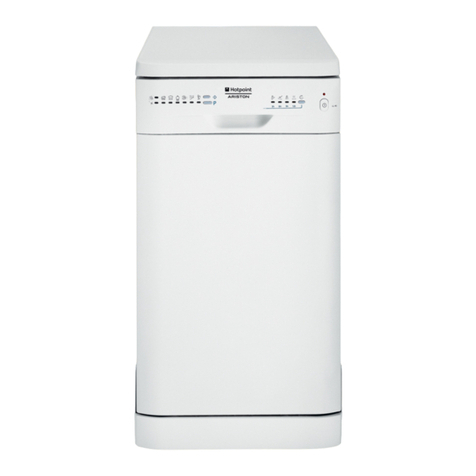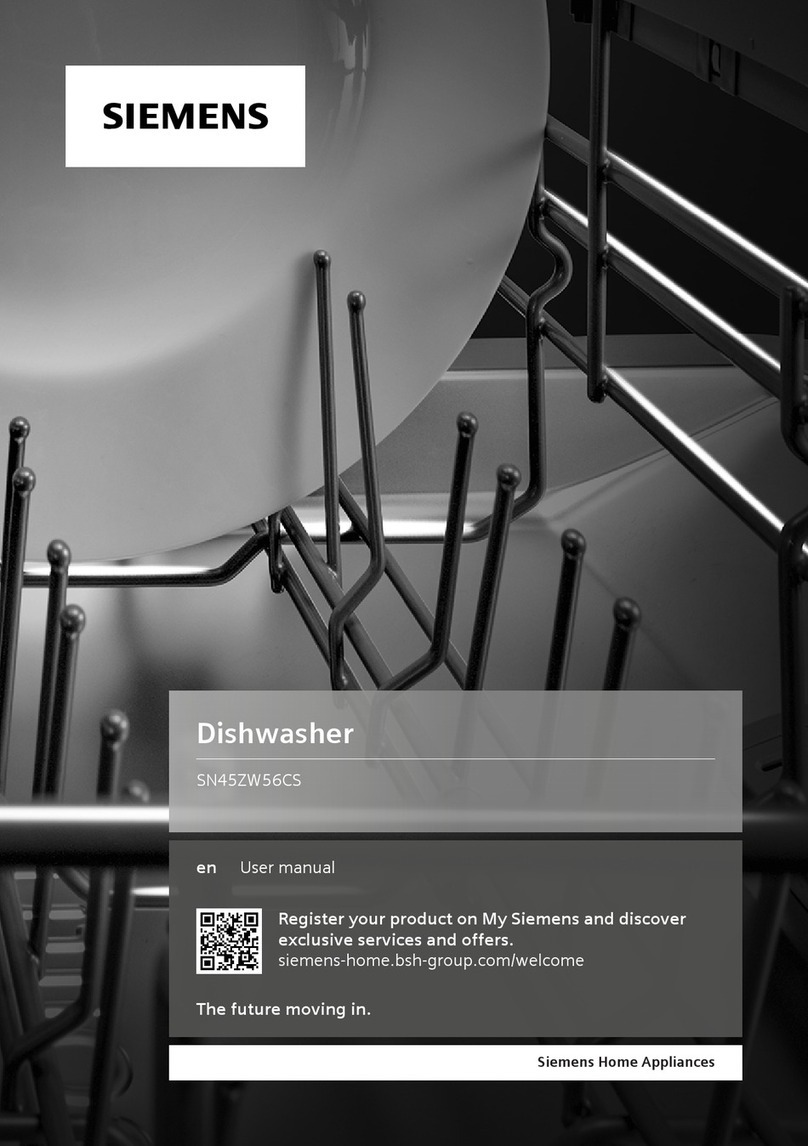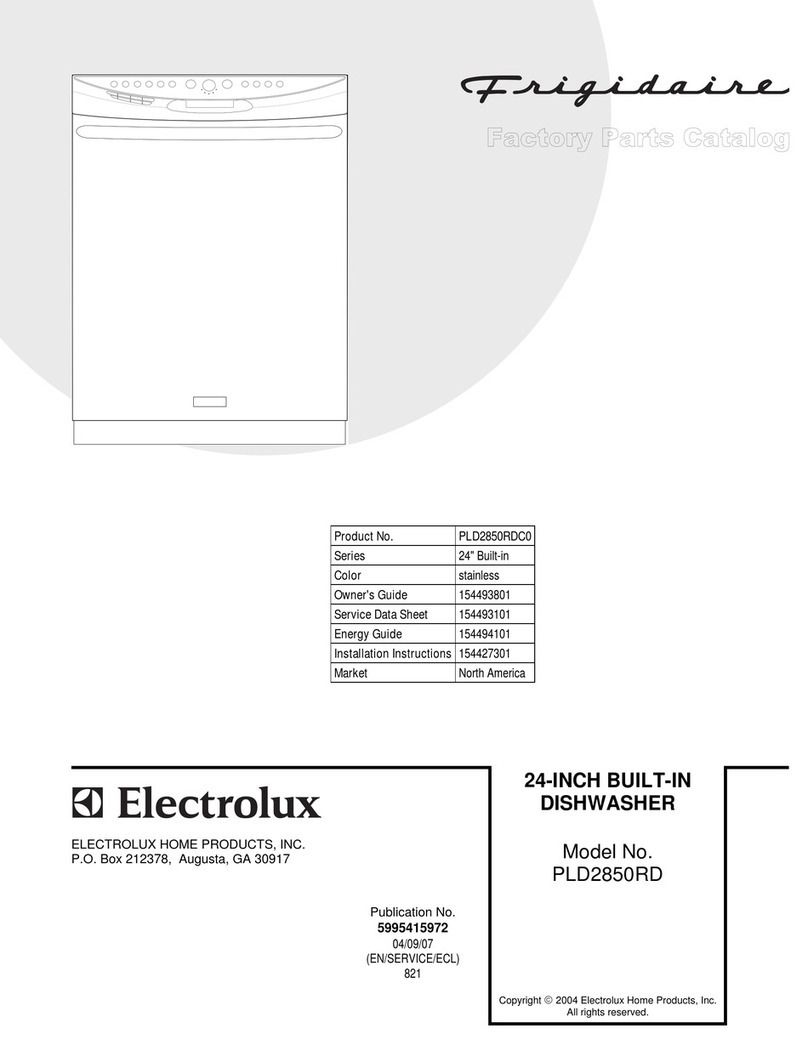
Safety instructions
NOTE!
•Read the operating instructions and keep
them in a safe place!
•Number of place settings: 14
•Never use the dishwasher for any purpose
other than that specified in these operating
instructions.
•Do not load the dishwasher door or dishwash-
er baskets with anything other than dishes.
•Never leave the dishwasher door open as
someone may trip on it.
•Use only dishwasher detergent!
•This appliance is not intended for use by
persons (including children) with reduced
physical, sensory or mental capabilities, or
lack of experience and knowledge, unless
they have been given supervision or instruc-
tion concerning use of the appliance by a
person responsible for their safety.
•If the supply cord is damaged, it must be
replaced by the manufacturer, its service
agent or similarly qualified persons in order
to avoid a hazard.
•Damaged mains cables must only be re-
placed by a qualified electrician.
•This appliance is intended to be used in
household and similar applications such as:
- staff kitchen areas in shops, offices and
other working environments;
- farm houses;
- by clients in hotels, motels and other resi-
dential type environments;
- bed and breakfast type environments.
•Never place dishes with solvent residues in
the dishwasher due to the risk of explosion.
Nor may dishes that contain ash, wax or lu-
bricants be washed in the dishwasher.
WARNING!
Knives and other pointed items must be placed
with the points down in the cutlery basket or
horizontally in other baskets.
Installation
See the chapter Installation.
Child safety
Children must be watched. Do not allow children
to use or play with the dishwasher. Be especially
vigilant when the door is open. Some detergent
may remain inside! After adding detergent, al-
ways start the dishwasher immediately.
WARNING!
Dishwasher detergents are strongly alkaline.
They can be extremely dangerous if swallowed.
Avoid contact with skin and eyes and keep
children away from the dishwasher when the
door is open. Seek medical attention if swal-
lowed.
Check that the detergent compartment is
empty after completion of the wash cycle.
Activate child lock (Kid Safe™)
You can activate the child lock (button lock) to prevent children from
starting the dishwasher. See the chapter Settings.
Winter storage/Transport
Store the dishwasher above freezing temperature and avoid long
transport distances in very cold weather. Transport the dishwasher
upright or laying on its back.
Overflow guard function
The overflow protection starts pumping out the machine and turns off
the water supply if the water level in the dishwasher exceeds the normal
level. If the overflow protection is triggered, turn off the water supply
and call the service department.
Packing material
The packaging protects the product during transport. The packaging
material is recyclable. Separate the different packaging materials to
help reduce raw material use and waste. Your dealer can take the
packaging for recycling or direct you to the nearest recycling centre.
The packaging is comprised of:
•Corrugated cardboard made from up to 100% recycled material.
•Expanded polystyrene (EPS) with no added chlorine or fluorine.
•Supports made from untreated wood.
•Protective plastic made from polyethylene (PE).
Disposal
The dishwasher is manufactured and labelled for recycling.
When the dishwasher has reached the end of its service life and is to
be disposed of, it should immediately be made unusable. Pull out the
power cable and cut it as short as possible.
Contact your local authority for information about where and how your
dishwasher should be correctly recycled.
3

